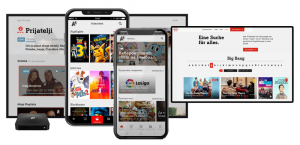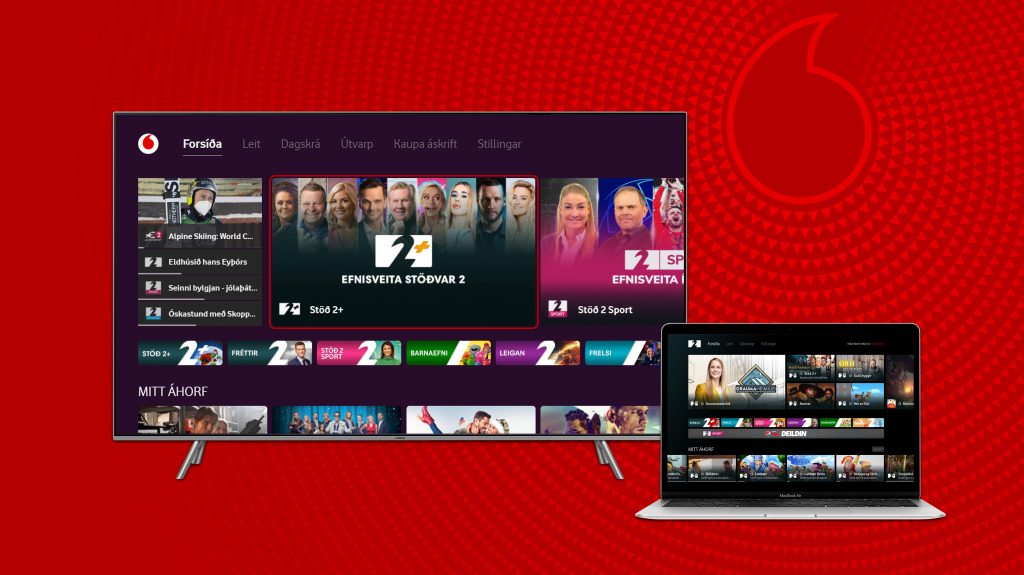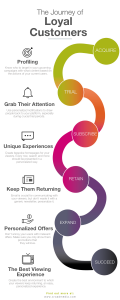
After more than 40 years of operation, DTVE is closing its doors and our website will no longer be updated daily. Thank you for all of your support.
Service providers get personal
Tom Dvorak, co-founder and chief commercial officer of XroadMedia, explains to Digital TV Europe why personalisation of video can go far beyond existing forms of content recommendation.
Personalisation of the video experience is seen as a crucial part of the appeal of streaming services. Delivering individual streams to each user rather than a single broadcast feed to all means that service providers have an opportunity to tailor the experience to individual preferences.
Most of the focus to date has been on personalising content recommendations, which are seen as the lynchpin of getting audiences to use services and to stay with them rather than churn and look elsewhere. The problem of finding the content you want to watch becomes more pressing when there are tens – or even hundreds – of competing services vying for the attention of time-limited audiences.
But as competition for viewers’ time and money intensifies, and the propensity to add more services to self-created bundles tails off, attention is beginning to switch to other areas of personalisation that could prove to be crucial in separating streaming success stories from those destined to fail.
“Everything is personal”
 Tom Dvorak, co-founder and chief commercial officer of content discovery specialist XroadMedia, believes that “everything is personal” in today’s streaming world. That means personalisation not only of content recommendations but of the entire customer journey.
Tom Dvorak, co-founder and chief commercial officer of content discovery specialist XroadMedia, believes that “everything is personal” in today’s streaming world. That means personalisation not only of content recommendations but of the entire customer journey.
This encompasses the personalisation of ”the users’ lifecycle management“, he explains.
“You can analyse the user and you will know what stage they are at in their lifecycle as a customer. You may have to take certain decisions depending on the stage they are at,” says Dvorak.
This can lead video service providers to tailor promotions to individual users that are designed either to keep them with the service – if they are contemplating churning – or to upsell them to take more expensive packages.
“You can make sure the right content or packages are being presented to users at the right time and also on the right device,” says Dvorak.
For users, the benefit is to get a service that meets their needs. For the service provider, one benefit is to get an ever-greater understanding of how their users behave based on their collection of data.
“What we can do – and this is unique to our solution – is create a predictive score for every single user and every single asset at any time,” says Dvorak. “With this information, the service provider can create different personalisation use cases. That can be about presenting the right content to the user at the right time, but it can also be about making sure they get the right notifications to bring them back into the service or about creating personalised newsletters.”
Dvorak says that operators often know a lot about the behaviour of their customers, but without knowledge of why they have behaved in a certain way. “When they understand the ‘why’, they can also define the right KPIs for their service, and those can be achieved through personalisation,” he says.
From advertising to upselling
Addressable advertising is part of this new wave of personalisation, says Dvorak. “Advertisers are now more open to targeted advertising, but I wouldn’t go so far as to call it personalised advertising yet,” he says. “We are moving to more contextualised targeting where you very often have ads that are related to the content and the people watching the content. The next step is going a few steps deeper. When you talk about set-top boxes at the household level you sometimes may have multiple users watching at the same time and you can’t really distinguish between them, so household-level targeting is the right approach. But for individual devices you can get further into personalisation.”
In the latter case, he says, advertisers can have more confidence that their ads are viewed and appreciated. This can open up pay-per-view options for selling advertising, with much higher CPMs than for traditional ad spots.
 Addressable advertising is not however the only way in which service providers stand to benefit from greater personalisation. Personalisation can also help combat churn.
Addressable advertising is not however the only way in which service providers stand to benefit from greater personalisation. Personalisation can also help combat churn.
“The most important thing is to keep the service relevant to the user, and personalisation of the user interface and creating viewing opportunities are the most effective ways to encourage viewers to keep watching and consuming content,” says Dvorak.
The application of this kind of personalisation can include sending notifications to users about upcoming content that may appeal to them.
“If you know what content is really relevant for the user, and a piece of relevant content has just entered the catalogue, you can set a rule to notify that user. This will create new viewing opportunities for the users and also increase the depth of content they are watching and reduces the likelihood for them to churn,” says Dvorak.
In addition to combatting churn, personalisation also has a potential role to play in upselling existing customers to higher-tier packages.
“This is the Holy Grail really. We can include presenting content in packages that the subscriber doesn’t currently have access to. We always advise our operator not to be too aggressive in doing this – there’s nothing worse than filling your entire UI with content the user can’t access – but we can seed such messages into the interface and clearly identify them as content you might be interested in that is in a different package. You could also tease users with a 10-15 second trailer of the content, or you could create a dedicated section of the UI for content the user might like to upgrade for,” says Dvorak.
Dvorak says that service providers also look into providing personalised channels for subscribers that could be supported by addressable advertising. Such channels can be hybrid, combining elements of multiple linear channels in addition to on-demand libraries.
Could that be taken further to the level of developing personalised packages to suit individual wallets and viewing requirements? Probably not yet. “The bigger limitation here could be on the content licensing side,” says Dvorak. However, he says, giving users the ability to change subscriptions on a month-by-month basis, mixing and matching channels and on-demand libraries could be a powerful tool to keep them engaged with a service.
Beyond video
Furthermore, developing these personalised channels and self-serve combinations could be extended to content beyond video content alone.
“People are now looking at other services than pure video,” says Dvorak. Video could be combined with other digital media such as written articles, short-form content, podcasts and user-generated content.
That brings challenges. Service providers are well-positioned to personalise their offerings on the strength of their user data and usage data, but they are also reliant on metadata to describe the content they sell.
“With user-generated content, for example, you hardly have any metadata attached to that at all, so you need a solution that can adopt to the quality of available data,” says Dvorak.
For super-aggregating service providers, there is also a challenge in securing the cooperation of content partners.
“Data sharing between platforms is a challenge, particularly big companies hardly share any data. For operators, if they aggregate services, there may be no usage information from partners and that makes it much harder for the service provider to personalise the content they present to users,” says Dvorak. “That’s probably the biggest challenge for content aggregation providers today.”
Other hurdles facing operators include restrictions on content licensing that may impede them from offering certain content on certain devices in certain parts of the world in a way that simply doesn’t make much sense to individual users.
“What we try to do is to make sure our customers understand the benefits of personalisation. So we have developed a trial programme where we can show our customers first-hand the benefits of the solution and they have the ability to test and understand how we can help them achieve their KPIs,” says Dvorak.
“For a set period of say 30-60 days we can show partners what use cases have what kind of impact on which KPIs. That’s a very powerful way of convincing people who are sceptical – and some of them are – about the value of personalisation.”
Dvorak says that XroadMedia’s trial programme is a key point of differentiation for the company. “We have done this successfully with small providers and with large telcos. We have implemented our technology in a very short time in existing solutions such as OTT or IPTV set-top boxes and worked with the telco or operator and their editorial teams,” he says.
“With our predictive score for every asset and every user, our customers can immediately understand what content is relevant and what to promote or not to promote at any given time.”
In addition to its ability to offer trials and its expertise in identifying what content is of interest to what user in a particular context, XroadMedia can also shine through ease of implementation, says Dvorak.
“We have a single API that connects to our customers’ platforms in a very simple way in a very short time-frame, enabling them to ingest data into our back end and retrieve personalisation use cases immediately,” he says. “The other thing is that rather than provide technology to operators, we provide tools and use cases so they can decide how to implement our solution in their environment and maximise the benefits for them and their KPIs.”
For Dvorak, OTT and pay TV operators are just beginning to tap the potential of personalisation.
“I see several things happening. First, advertising – and FAST in particular – is growing and we see more personalisation happening in that space. Rights-holders are distributing content via FAST channels and the FAST aggregators, who are now also looking to personalise their offerings. Second, there is a lot of interest in combining video with other digital media services such as audio, text services, games. We see more customers trying to bring together these different services, whether they are large media companies or telcos. There is a lot of interest in single sign-on and cross-service personalisation, and this is something we see evolving strongly in the coming months and years.”
This is sponsored content.



